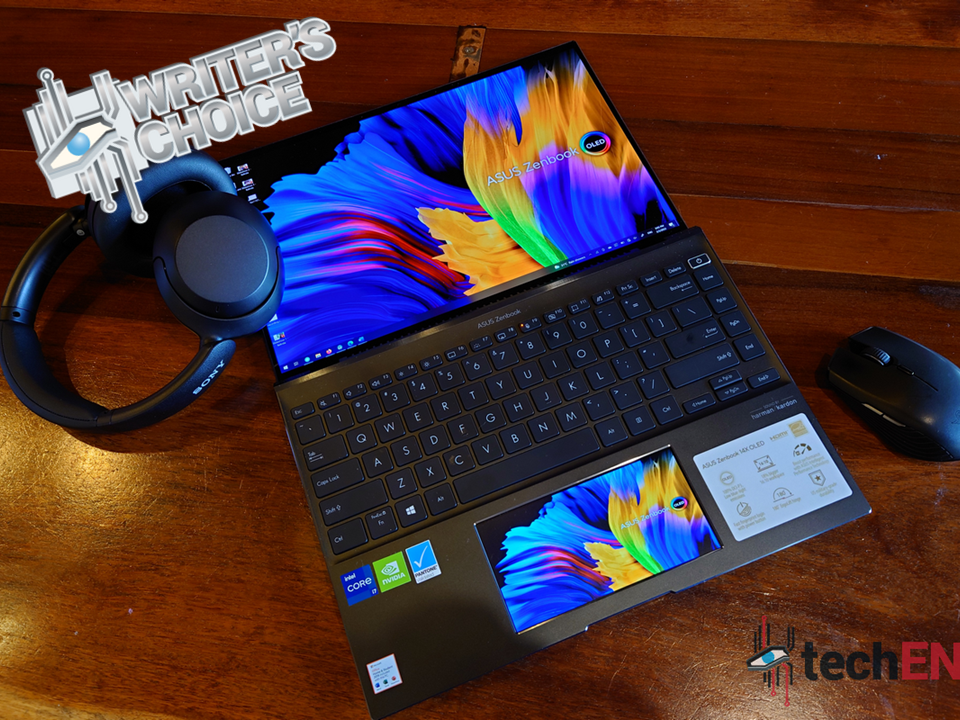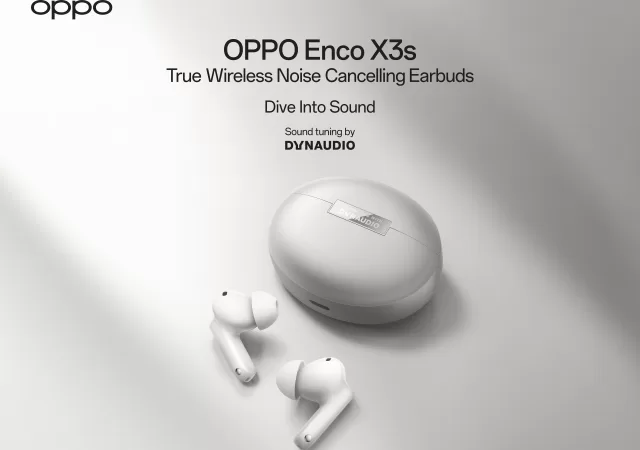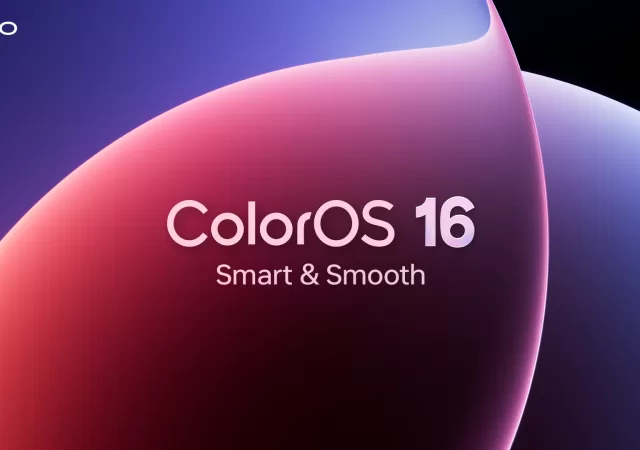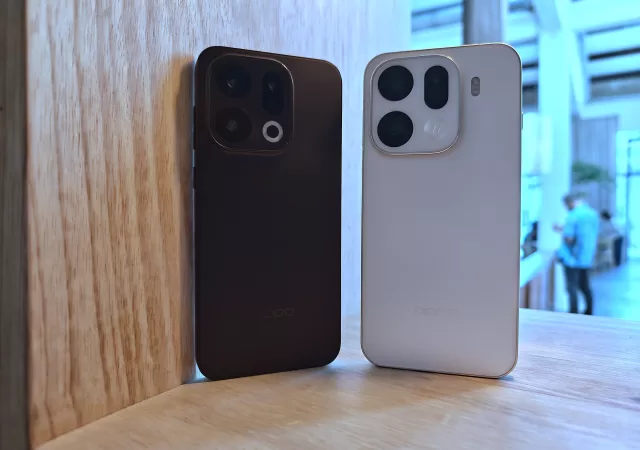It’s not every day that we see something new and interesting when it comes to laptops. We’re so used to seeing the mundane clamshell form factor with new insides, displays and ports. However, ASUS has been on a roll lately with a slew of laptops that bring fun, new features as well as new hardware that is truly revolutionary. Over the past year, they’ve been adamant about equipping their laptops with OLED displays which are certified for their colour accuracy.
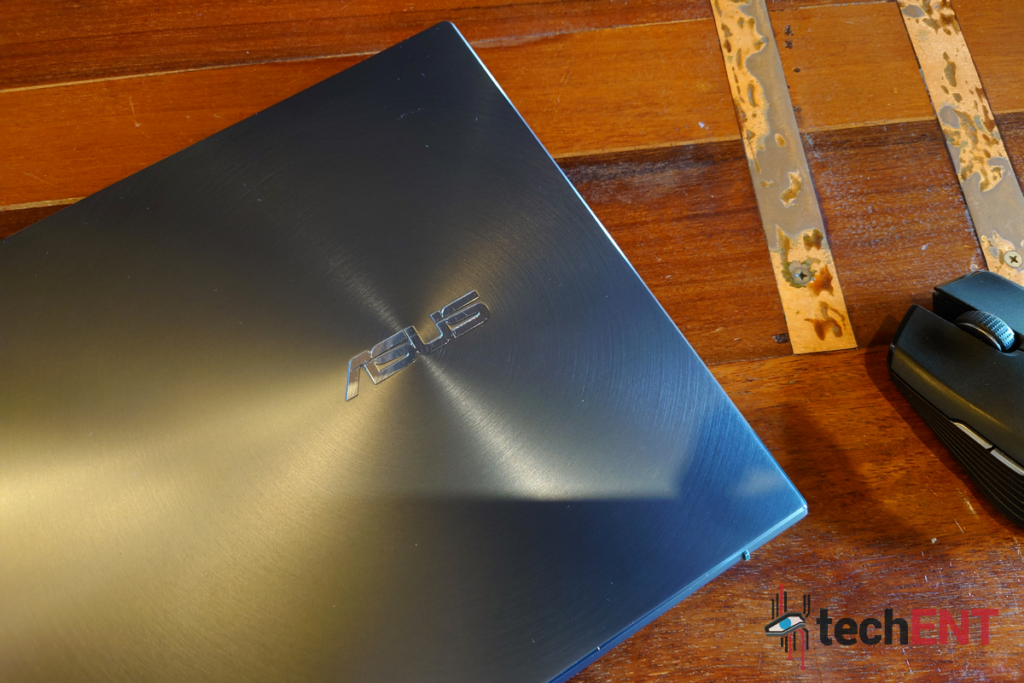
With their Zenbook Duo lineup, they’ve brought an interesting approach to multiscreen productivity. But what happens when you take multiscreen productivity and fit it into a space once exclusively reserved for the trackpad? You get the hallmark feature of the ZenBook 14X’s hallmark feature: the Screen Pad. Does this new approach make sense? Is productivity enhanced or deterred by the feature and is it here to stay?
We’re looking to answer those questions and also the most pertinent one when it comes to any piece of tech, “Is it worth my money?”, in our in-depth review of the ZenBook 14X OLED.
Design
The ZenBook 14X OLED has its origins in the ZenBook’s early days as a flagship. It’s equipped with a machined aluminium body with a brushed finish and made of premium build materials; like any other ZenBook. However, the thing that makes the laptop stand out is the sheer sleekness and miniature form of the laptop overall. ASUS has made the ZenBook 14X OLED one of the smallest and sleekest laptops in its lineup. However, its minute stature isn’t where the story ends.
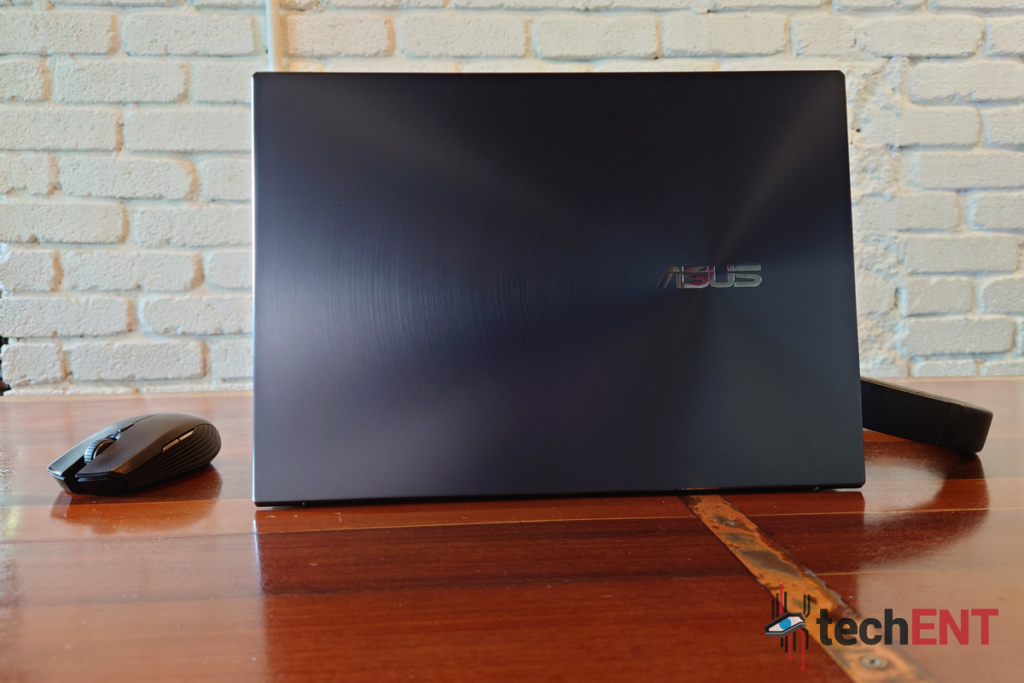
When it boils down to it, the ZenBook 14X OLED distinguishes itself with its brushed aluminium top. However, it doesn’t give in to the incessant need to be thin as paper. Instead, it’s thicker and more substantial than its predecessor and competition. Coming in at just under 17mm, the laptop strides the line of being just thin enough and being thick and chunky in this day and age. That said, the added thickness and sturdy build materials provide the top lid with added stability and rigidity. This also prevents the display from flexing which can be detrimental to the laptop.
That said, the ZenBook isn’t only sturdy, but it’s also well designed. ASUS has made sure that while the ZenBook 14X OLED is slim and light, it’s also well equipped for working on the go. It comes with a good range of ports – which we will elaborate on later in the review. That said, these ports don’t break the overall aesthetic of the laptop. Instead, ASUS has made them flush seamlessly into the aluminium chassis. The thickest point of the laptop is also used to house the largest ports: USB-A and HDMI ports.






The small body of the laptop doesn’t hinder ASUS from equipping the laptop with a tactile keyboard that emblazons the entirety of the main body. It’s only complemented by the chamfered dip which adds to the aesthetic of the laptop. That same aesthetic dip also highlights a change in materials as the top plate of the keyboard and ScreenPad isn’t made with the same aluminium. Instead, it feels a little more like plastic. That said, the plate is still encased within the aluminium frame.
Hardware
The ZenBook 14X OLED isn’t just about the aesthetics, it’s built for productivity. To achieve this, ASUS has packed the laptop with rather commendable insides which allow the ZenBook to stride the fine line between battery life and performance.
Specifications
| ASUS ZENBOOK 14 | UX5400E | As tested |
| Processor (clock) | Intel® Core™ i7-1165G7 processor 2.80 GHz quad-core with Turbo Boost (up to 4.70GHz) and 12MB cache |
| GPU | Intel® Iris® Xe Graphics NVIDIA GeForce MX450 |
| Display | 14” OLED 2.8K (2880 x 1800) resolution 16:10 aspect ratio Touch Panel anti-glare screen 550nits brightness |
| Memory | 16GB LPDDR4X 512GB PCIe® NVMe™ 3.0 x2 M.2 SSD |
| Networking and Connections | Intel WiFi 6 with Gig+ performance (802.11ax) Bluetooth 5.0 2 Thunderbolt™ 4 USB-C® 1 USB 3.2 Gen 2 Type-A 1 Standard HDMI 2.0 1 MicroSD card reader 1 Audio Combo Jack |
| Battery | 63Wh lithium-polymer battery Up to 8.3 hours of battery life 100W Type-C power adapter (Output: 20V DC, 100W, Input: 100-240V AC, 50/60Hz universal) |
| Operating System | Windows 10 Home 64-bit |
| Miscellaneous | HD camera ScreenPad Backlit Keyboard Stereo Speakers Microphone DisplayPort over USB-C Thunderbolt 4 MIL-STD 810H Durability |
Features
The mainstay of the ASUS ZenBook OLED 14X is undoubtedly going to be its ScreenPad. However, it’s not the only feature that comes with the laptop. It comes with a slew of software and hardware features that make this laptop a real contender if you’re in the market for a new one.
Almost everything you want for connectivity
ASUS has proven time and time again that compact, thin laptops need not be handicapped when it comes to connectivity. The Zenbook 14X OLED comes with all the connectivity options that you need – well – unless you’re looking to take over the internet. It comes with two USB-C ports with Thunderbolt 4, a single high-speed USB 3.2 Type A port, an HDMI 4.0 port, a combo audio jack and even a micro USB card slot. With these essential ports, you’re pretty much covered when it comes to plugging in. That said, you also charge with USB-C ports, so, if you’re charging the laptop, you’ll have one less USB-C port. The only physical port missing is an ethernet port but you have WiFi 6 connectivity with a high enough throughput that you can even do online gaming.
Since we’re already on the topic, the Zenbook 14X does come with all the bells and whistles when it comes to wireless connectivity on laptops. Aside from WiFi 6, it also comes with Bluetooth 5.0. So you’ll be able to stream and connect to your wireless keyboard, mouse or even headphones without much hassle.
ASUS ScreenPad
ASUS’s novel ScreenPad is definitely a unique feature of their Zenbook series. It brings a whole new level of productivity. You’re presented with an additional screen from the get-go when you purchase it and given the norm of having more than one screen nowadays, it’s a welcomed addition to a laptop purchase.
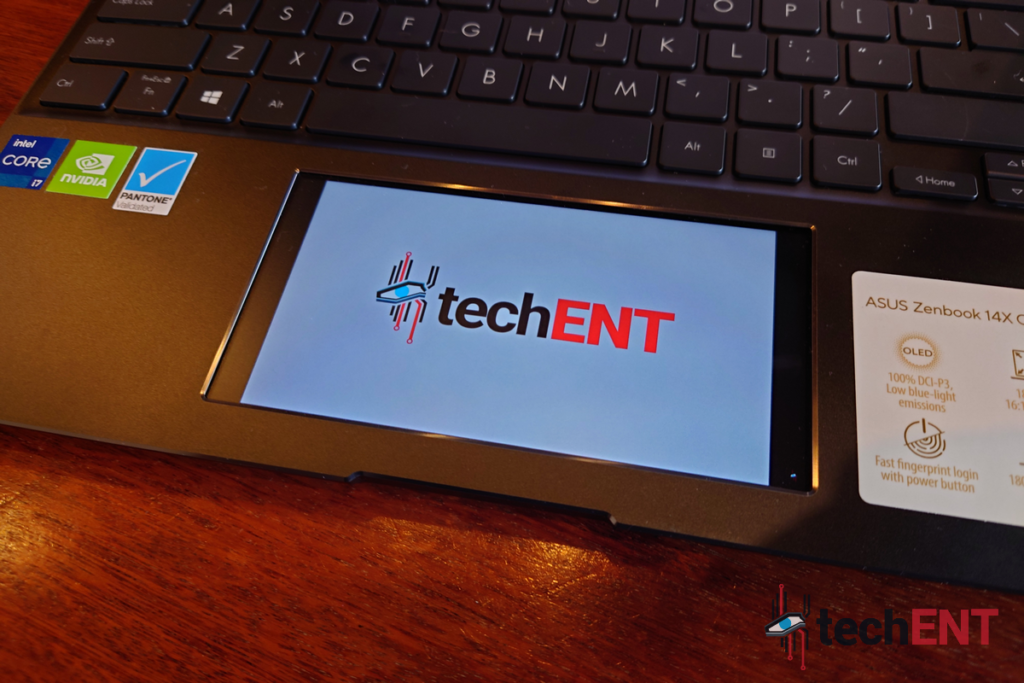
The ScreenPad brings an additional 1080p screen albeit a little smaller than we’re used to. It allows you to use apps on the track pad which makes so much sense especially if you’re working with a mouse. The extra screen real estate allows you to use the calculator more naturally, refer to a website or document or even control your media while keeping productive. ASUS has also integrated their multiscreen setup with Link to MyASUS more deeply. A lot of the functionality that we’ve come to expect from the Link to MyASUS app is now natively integrated into ScreenPad with the Screen Xpert software. You can get prompts for messages and phone calls on the ScreenPad while you work and even use the ScreenPad to mirror your smartphone.
While all that is fine and dandy, the ScreenPad comes with a steep learning curve. It brings a layer of complexity to functions that many people expect to “just work” on Windows. One of the most irritating issues that we faced during our time with the Zenbook 14X OLED was the fact that the ScreenPad added an additional screen when it came to projecting displays. This was due to Windows recognising it as a display but it not showing on the display setup in Windows’ settings menu. To make things work as you would expect, we had to put the ScreenPad into trackpad mode which turned off the screen functionality.
In addition to this, you also need to get used to a new set of gestures that allow you to use the ScreenPad more effectively. The most essential is a three-finger swipe that will allow quickly toggle the track pad function. However, this toggle is only temporary – a fact we found out in the most annoying way. Due to the track pad function being temporary, we would be toggling apps unintentionally. This became an irritating occurrence particularly when we were trying to get urgent work done.




While it does seem like a deal-breaker, we have to keep in mind that the Zenbook is one of the only laptops with the ScreenPad. This also means that we have a little bit of learning when it comes to the novel features of the laptop. After using the laptop for a week, the gestures and extended functionality became second nature.
That said, when it came to working on the go, we found ourselves turning the ScreenPad off all together. This was due to the fact that having it on while on battery had a significant impact on battery life. We noticed about 20-30% less battery life with it on. That equated to about 4-5 hours of battery but without it, we got about 8 hours.
AI Powered Clear Voice, Quick Sign In with Windows Hello & Linking Up
Hardware aside, ASUS has also bolstered the laptop with a whole bunch of AI enhancements. One of our favourites is the ClearVoice mic. With ASUS’s ClearVoice, the integrated microphones can intelligently suppress background noise and detect and enhances the speaker’s voice. So, you won’t be cut off by a passing vehicle or even a crying baby when you’re taking your video call. Given the work from anywhere reality that is quickly becoming mainstream, this is definitely a welcomed feature. In fact, during our review time with the laptop, the feature was so good that people didn’t realise that we took a call from a café as the background noise was so minimal.
The Zenbook 14X OLED also comes with an integrated fingerprint sensor in its power button. This has to be one of the most welcomed features on the laptop. With the integration, the laptop seamlessly powers on and signs in with one click. This is bolstered by the SSD in the Zenbook 14X OLED. It boots and is ready for use in a matter of seconds.
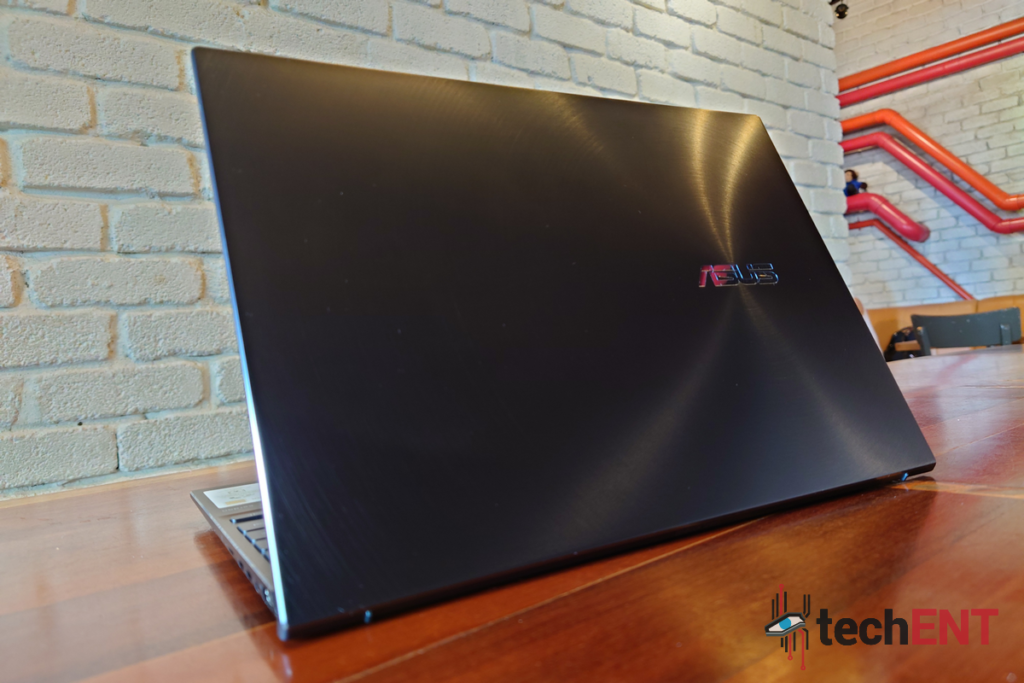
Of course, with the Zenbook 14X, you get multiple options when it comes to keeping connected with your smartphone. You have Windows Phone Link (previously Your Phone) and Link to MyASUS. The latter provides even more functionality in our opinion. The Link to MyASUS app not only integrates seamlessly with the ScreenPad, but it also allows you to use tablets and large phones as an external display. This allows you the flexibility of being able to have multiple screens on the go. The wireless connection does have a little lag when it comes to interactions but if you’re simply using it to refer to documents or even to play media while working, you won’t even notice it.
PERFORMANCE
ASUS’s commitment to creating powerful, versatile, thin and light laptops shines through in the Zenbook 14X OLED. The laptop doesn’t perform like your typical thin and light. The thought that ASUS put into the design and feel of the laptop allows it to be one of the most sturdy and powerful small form factor laptops out there. While it’s no gaming laptop, it’s able to handle nearly workloads we don’t typically expect from a thin and light.
During our review period with the Zenbook 14 OLED, we were editing video and even doing some light gaming on the laptop without much hassle. When it came to editing video, we had source footage at 1080p resolution. The edit had about 3 layers with subtitles and effects and it was exported to a 1080p video for YouTube. While it did send the fans into overdrive, the laptop was able to handle it without overheating. In fact, aside from a longer export time, it was very seamless.
Gaming on the Zenbook 14 OLED is best left for proper gaming laptops. It goes without saying that AAA titles really taxed the processor and the NVIDIA GeForce MX450 GPU of the laptop. However, if you’re playing games like City Skylines or even Star Craft 2, the Zenbook 14 can definitely handle the load. You may not be able to play on maxed out settings, but you will definitely have a good experience playing it.
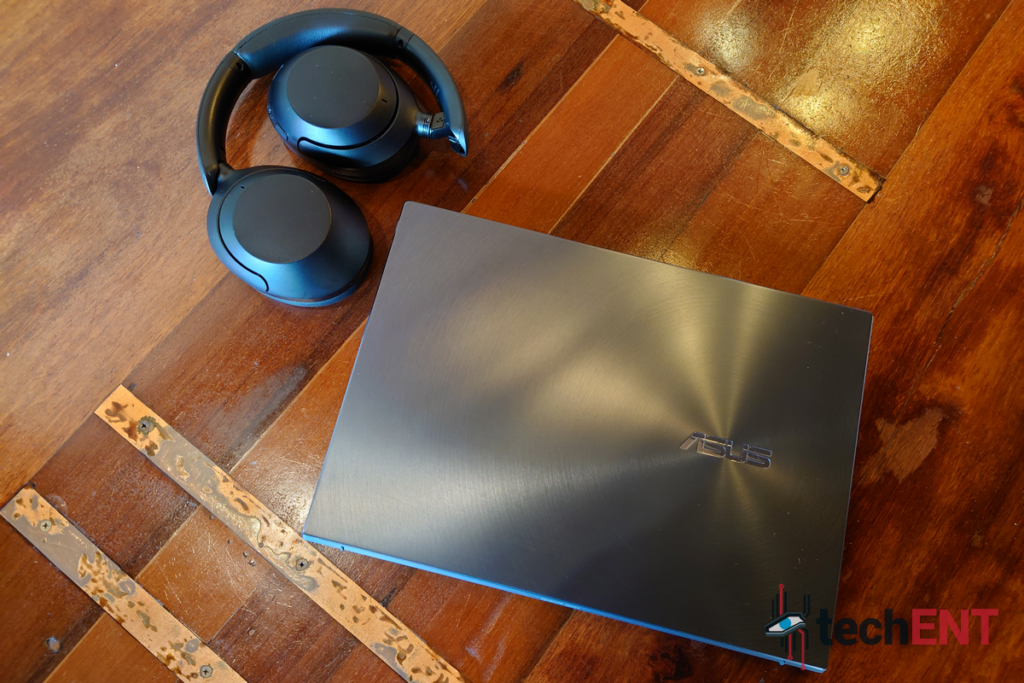
Other than those taxing activities, the Zenbook 14 OLED was able to handle everything else. Word processing and even large Excel files were a breeze for the laptop. Even if there was some slowdown, it was only with active tasks. Once those were over, the laptop performance was seamless and back to being smooth as butter. It could even handle Firefox and Chrome with multiple tabs open at the same time. It didn’t slow down but it did get a little warm which kicked the fans into overdrive.
Battery life on the laptop is typical of one as small and power packed as the Zenbook 14 OLED. It lasted about 8 hours on a single charge without the ScreenPad on. However, when the ScreenPad was turned on, this generally dropped to about 4-5 hours. This is partially due to the extra power drawn by the ScreenPad’s screen. That said, the high resolution and luminance of the main display are also factors. However, if you’re running low on charge you’ll be able to use a USB PD compatible charger to get the charge up to about 50% in forty minutes. The Zenboook picks about its chargers, more often than not, it will ask that you plug it into its original charger, however, GaN (Gallium Nitride) chargers with about 85W capacity seems to work as well – keep in mind, that the original charger in the box is rated at 100W.
Display
The focus that ASUS has on bringing colour accurate OLED displays is really apparent in the Zenbook 14 OLED. This is partially because of the contrast between the screen quality of the main display and the ScreenPad’s IPS panel. However, the differences were mainly apparent when it came to viewing content and content creation.
The main display produced vibrant and saturated colours. While being saturated and vibrant, they were also relatively accurate colour reproductions. The accuracy was spot on and allowed us to colour grade video and photos when we were using the laptop on the go. The high resolution also gave us more visual real-estate when it came to doing programs like Adobe Illustrator. That said, the effect of this was relatively minute considering the 14-inch size of the display.
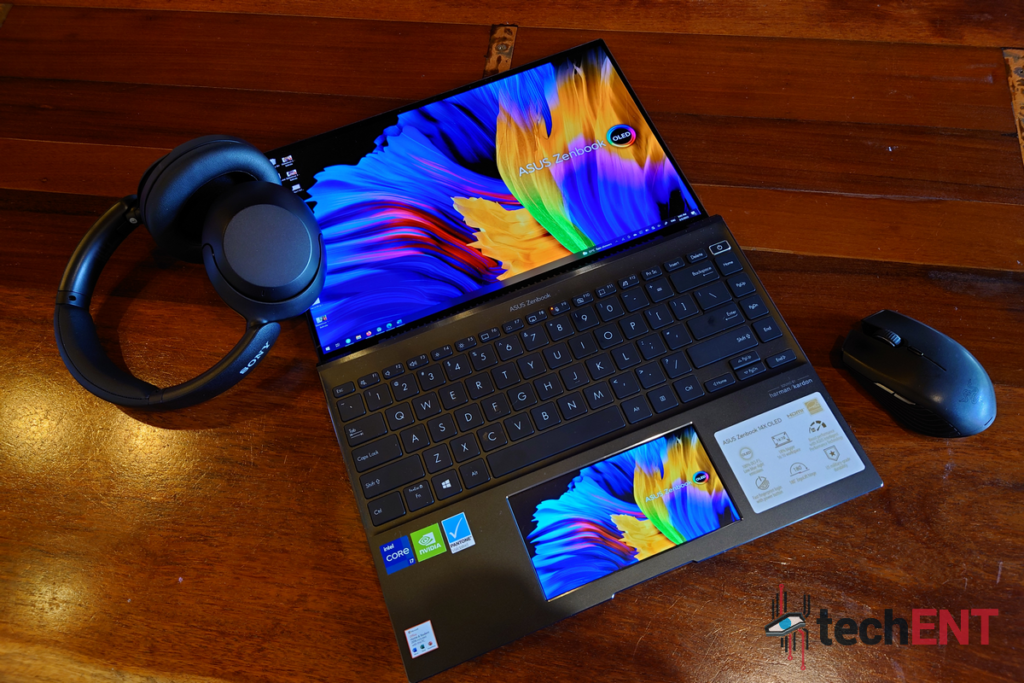
While 14-inches may seem like a very small screen, it actually strikes a balance when it comes to size and productivity. It feels close to what we can consider a goldilocks zone for compact laptops. It’s just enough real estate that you have enough detail and clarity while keeping the size of the laptop portable.
The ability to use touch to navigate brought an added simplicity to interacting with the PC. The touch input allowed us to scroll through websites in what felt like a more natural way and also interact directly with links and the like. It also complemented the ScreenPad as you didn’t need to have it in trackpad mode to get things done.
Taking Multitasking to a Whole New Level with a Steep Learning Curve to Boot
The Zenbook 14 OLED is a machine built for multitasking and for productivity. It excels at being a machine for productivity and creativity. It’s one that allows you the freedom of multitasking in a way that makes sense to you while having a beautiful screen and a complementary ecosystem with Screen Xpert 2 and Link to MyASUS. All in all, it’s a machine that dedicates most of its resources to enabling its users to be creative, productive and even let loose with some light gaming.



